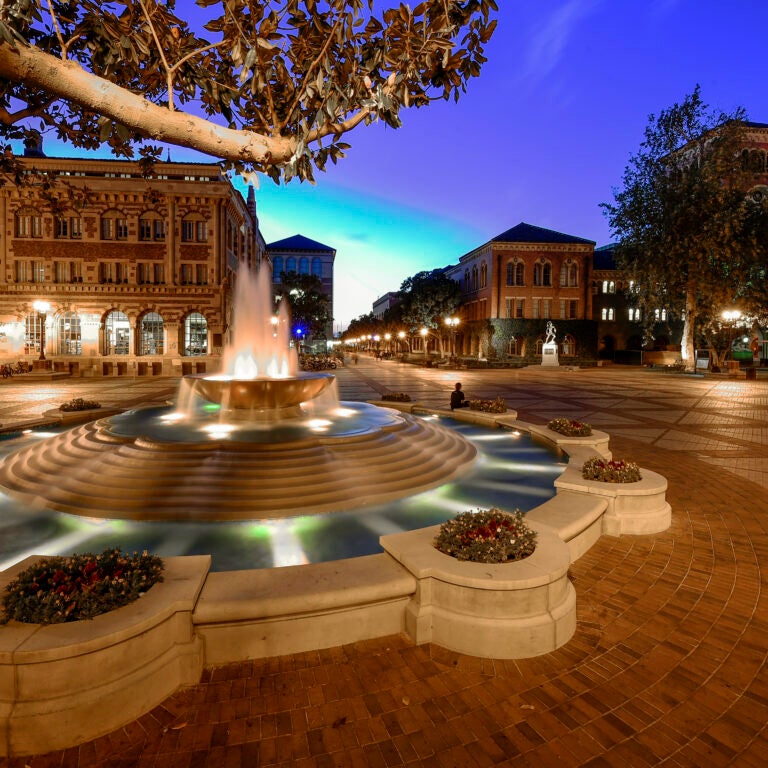
Elizabeth Daley, right, and Marlene Loadvine (Photo/Cody Pickens)
The Strong Women Who Broke Ground (and Barriers) at the USC School of Cinematic Arts
A 28-year partnership between Elizabeth Daley and Marlene Loadvine helped shoot the school to the top.
She was a producer, not an academic. So when Elizabeth Daley became dean of the USC School of Cinematic Arts in 1991, she needed a right-hand man — or woman. In stepped Marlene Loadvine, senior associate dean of external relations. Together they increased the school’s endowment from $6 million to more than $228 million. They also added new divisions: Interactive Media & Games and Media Arts + Practice. And, of course, they oversaw the creation of the state-of-the-art Cinematic Arts Complex. The duo recently took a look back at a changing industry and their 28 years of partnership.
Timing the rise of the School of Cinematic Arts in the 1990s
Marlene Loadvine: Everyone knew that the school had some amazing alumni, but the school itself struggled. Elizabeth came in and saw the potential. Many people in the industry had never had formal education or weren’t graduates of film school. But there were people like Martin Scorsese and George Lucas who had gone to film school, and now that they had made incredible films, they became household names. So high school kids said, “I want to be a filmmaker, where do I go to do that?”
Elizabeth Daley: The ’60s generation, with Lucas, kind of changed the view of Hollywood about film schools. Then you had the next wave, like Robert Zemeckis — who did the successful Back to the Future series — and they were reaching their peak.
Growing diversity in academia and Hollywood
ED: Coming here, in my first faculty meeting, the only other woman in the room was my assistant. There were a couple of other women on the faculty who just didn’t happen to be there, but it was very clear that this needed to change. We actively recruited women as students, and it was also critical to recruit women faculty. We began to change the faculty by sheer will.
ML: In terms of content, the industry is just now starting to be diverse. Kids from different ethnicities and cultures haven’t seen what is being portrayed on the screen and on television as replicating what they know.
Education for an industry in evolution
ED: What we train people to do today is the same thing we’ve always done: create compelling experiences. Those can be educational experiences, those can be purely entertainment experiences, they can be interactive experiences. But you’re always focused on creating an experience that people want to participate in. And then we have people in our Division of Cinema and Media Studies who are able to really study and look at the implications of that for our society, as well.
Looking back, looking forward
Our school has proudly been at the forefront of every movement and innovation in the last nine decades of moving image media.
Elizabeth Daley
ML: I saw, in Elizabeth, immediately that she could articulate the mission of the school, she saw what she wanted to do, had enormous energy, and got it. As far as the fundraising goes, we don’t always agree on things—
ED: Thank goodness.
ML: —which is good, and I’m glad she’s a person who wants a lot of opinions and advice. My input means something, and that keeps this exciting. I think when we both took on these jobs, we said, ‘Well, I’ll do this for two or three years.’
ED: I tell Marlene: if she leaves, I leave.



